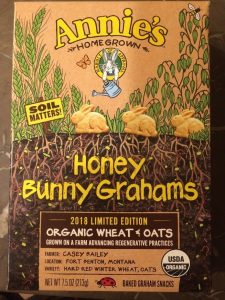By Kathleen Merrigan

Healthy soils are the starting block for biodiversity, clean water, carbon sequestration, and sustainable agriculture. For years we’ve been treating our soil like, well, dirt, and it’s about time we start to acknowledge this precious resource for what it is – for our economy, environment, and society.
It’s hard to think about soil erosion without envisioning the Dust Bowl. Donald Wooster, author of the Dust Bowl: The Southern Plains in the 1930s (2004) describes it as “one of the worst man-made environmental disasters in world history.” After years of westward expansion, a confluence of drought and intensive tilling and grazing of the prairies caused soil to rise from the land and travel as far as Washington D.C. In fact just blocks away from my office, the Lincoln Memorial was once shrouded in dust coming from as far as Kansas.

It was during one of these so called “black blizzards” in 1934 that the Soil Conservation Service was created by Congress, led by Dr. Hugh Hammond Bennett (2nd from the left in the photo). Bennett had spent years observing soil erosion and advocating for a national response to the crisis. The newly formed agency (now the USDA’s Natural Resources Conservation Service) worked to develop soil conservation plans based on watershed projects.
The first of these was the Coon Creek Watershed project, in Coon Valley, Wisconsin. Coon Valley is part of the Driftless Region, a geographic area spanning south Minnesota and Wisconsin, as well as parts of Iowa and Illinois which was highly affected by the Dust Bowl. This fertile area was on the brink of ecological collapse by the time Bennett and 200 men from the Civilian Conservation Corps (CCC) arrived to begin conservation projects. Deep 40 foot gullies had been carved into the earth by extensive plowing.

To combat these gullies the CCC implemented contour farming, a method of planting perpendicular to a downward slope and intermixing perennial crops. This practice reduces erosion by slowing water as it hits the soil and allowing for rain to soak into the earth. This reduction in runoff can decrease soil erosion by more than half. Today, Coon Valley is still a productive agricultural area with more contour acreage than anywhere else in the country. Contoured fields are also breathtakingly beautiful, especially near harvest, as seen in the photo on our homepage taken by my friend Jim Klousia in Chaseburg, WI in 2011.
Innovative solutions like contour farming are just as important in 2018 as they were in the 1930s. Despite a lot of good work, 24 billion tons of topsoil are still lost each year globally due to erosion and intensive farming practices. So I’m happy that soil health is back on the agenda with initiatives not just from the government and farmers but also from industry.

Annie’s Organic and Patagonia, for example, invest in and promote soil health through their products. Here at the Swette Center for Sustainable Food Systems we’re looking for solutions that improve soil health and other aspects of the food system. That’s why we chose this as the main photo on our website – it is a reminder of the importance of soil, and the birth of the conservation movement, and it continues to inspire us to accomplish great things.
Follow us on Twitter and sign up for our newsletter to stay in the know as we tackle these questions and more at the Swette Center for Sustainable Food Systems.